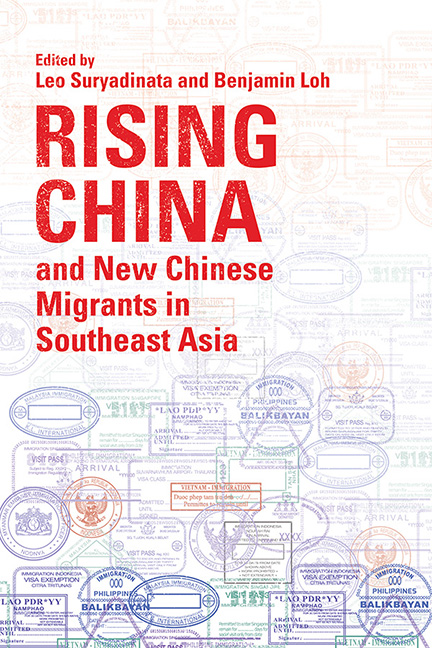Book contents
- Frontmatter
- Contents
- About the Contributors
- Introduction: Rising China and New Chinese Migrants in Southeast Asia
- Part I General Overviews on Rising China and Xin Yimin
- Part II China’s Soft Power, Xin Yimin and Local Communities
- Part III New Chinese Migrants and Local Communities
- Part IV New Chinese Migrants and Local Economies
- Index
2 - Contemporary Chinese Immigration into Mainland Southeast Asia
Published online by Cambridge University Press: 09 January 2024
- Frontmatter
- Contents
- About the Contributors
- Introduction: Rising China and New Chinese Migrants in Southeast Asia
- Part I General Overviews on Rising China and Xin Yimin
- Part II China’s Soft Power, Xin Yimin and Local Communities
- Part III New Chinese Migrants and Local Communities
- Part IV New Chinese Migrants and Local Economies
- Index
Summary
The character of immigration is often shaped by the conditions of departure. Why and how people leave their country, as well as the state of the country they leave behind, influence their attitudes and the relations they share with host societies. In the case of Southeast Asia, Chinese immigration over the centuries has been characterized by different levels of settlement and integration. There have generally been four waves of Chinese immigration into the region. The first wave saw scattered flows of Chinese merchants and traders between the tenth and fifteenth centuries into parts of Southeast Asia such as Sumatra, Cambodia and Campa, and later, Malacca from the fifteenth century. Many of these merchants and traders settled down to marry local women and integrated into local communities.
The second wave was triggered by conflict, wars, starvation, and corruption in the hinterland from the nineteenth century to 1949. This wave, also known as the “coolie pattern”, was made up of “large numbers of coolie labour, normally men of peasant origin, landless labourers and the urban poor” (Wang 1991, p. 8). During this wave, many migrants spread to different parts of the globe, including the United States, Canada, Latin America, Australia, Malaya and Indonesia, less as traders and merchants but more as indentured slaves and coolies to provide menial labour. Again, like the previous wave, many did not return to China but instead settled down in their destination countries and, in the case of Southeast Asia, to engage in the struggle to be recognized as members of newly formed nations. These waves of Chinese immigration came at a time when China was not the power it is today. Centuries of economic insulation and the ‘100 years of humiliation’ during which China was subjugated to Western powers, together with famines and war, had shaped the character of Chinese immigration and the way immigrants engaged and settled in host societies.
China’s 1978 open-door policy kick-started the third wave in Chinese immigration. Seen by some as the ‘New Chinese Migration’ (Wong 2012), this wave differed in scope and character from the previous two waves.
- Type
- Chapter
- Information
- Rising China and New Chinese Migrants in Southeast Asia , pp. 31 - 46Publisher: ISEAS–Yusof Ishak InstitutePrint publication year: 2022

